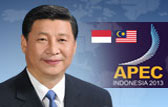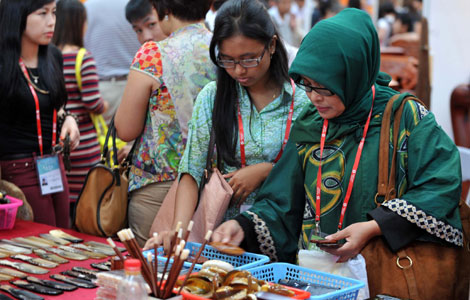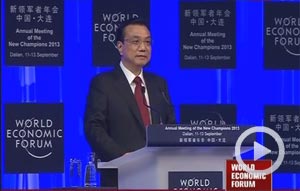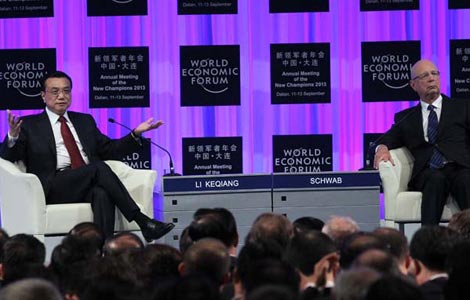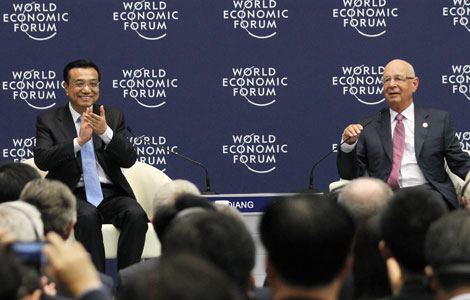Carry on China-ASEAN cooperation in 'Asia Way'
Updated: 2013-10-09 08:15BANDAR SERI BEGAWAN - As the 16th China-ASEAN leaders' meeting is set to be held here Wednesday, information to be conveyed from the summit by leaders of China and the 10 ASEAN member states on how to deepen cooperation in all fields and the direction and principles the two sides should adhere to in growing bilateral relations is worthy of attention.
Hand in hand, China and ASEAN have gone through an extraordinary path of cooperation. It has become an important consensus and objective for both to build a community of cooperation, interests and destiny.
Ten years have passed since a strategic partnership was launched. With bilateral trade witnessing a five-fold increase and two-way investment tripling over the past decade, China has become the largest trading partner of ASEAN, while ASEAN has emerged as China's third largest trading partner. Today, the pragmatic cooperation between the two sides, featured by the establishment of the China-ASEAN Free Trade Area (CAFTA), is unleashing thriving vitality.
The "golden decade" of China-ASEAN cooperation, as Premier Li Keqiang described recently, is a reflection of tremendous need for joint development of the two sides. Practice has proved that China and ASEAN are "natural cooperative partners" since they not only have the foundation and potential for cooperation, but also have strong willingness to do so.
The basic experiences from the successful cooperation during the "golden decade" come down to the "Asia Way," which can be interpreted as building mutual trust politically, sticking to the principle of mutual benefit in economic cooperation and properly resolving differences through dialogue and consultation.
Ever since the founding of ASEAN in 1967, the relations between China and the regional bloc have gone through a long process of extraordinary development. The two sides developed into dialogue partners after the Cold War ended. Bilateral ties have since advanced from comprehensive dialogue partnership to a 21st century- oriented partnership of good neighborliness and mutual trust, before being elevated to a strategic partnership for peace and prosperity.
The 46-year journey of bilateral relations has been fraught with difficulties, and the experience gained over these years should be treasured. Just as Chinese Foreign Minister Wang Yi said that the most important foundation of China-ASEAN relations is the region's peace and stability that we have jointly preserved, the most important consensus is to facilitate common development through cooperation, and the most important experience is to stick to the "Asia Way" and the "ASEAN Way" and resolve differences through friendly consultation and equal-footed dialogue.
Now the China-ASEAN ties are featured by all-dimensional, high- level, wide-ranging and multi-channel cooperation. However, both sides also face internal and external obstacles in advancing their relations, as well as factors adverse to stability and development. So it is imperative to stick to the "Asia Way," have a broader vision, and cherish the other side and what has be achieved so as to protect China-ASEAN cooperation from the adverse factors. A review of the past reveals that without peace and stability, there will be no prosperity and development.
Over the past decade, China and ASEAN have accumulated experiences, laid a solid foundation and beefed up confidence for future development; in the coming decade, the two sides will make joint efforts to upgrade CAFTA, create a "diamond decade" of cooperation, and therefore gear up the integration process of East Asia at large.
To further facilitate the development of China-ASEAN relations, it is necessary to unswervingly follow the path of strategic cooperation, treasure the basic experience of cooperation and adhere to the consensus reached by the two sides. As such, China and ASEAN will be able to achieve enriched and wider cooperation in the "Asia Way."

